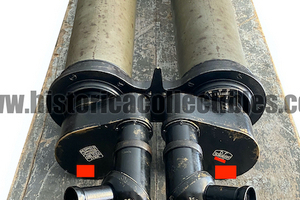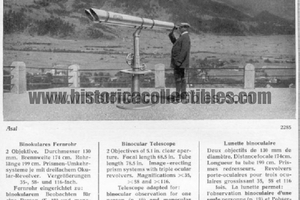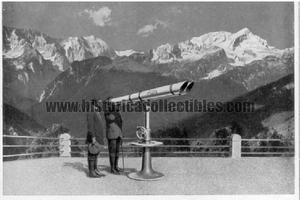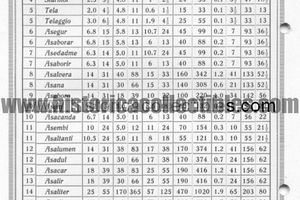Doppelfernrohr ASAL Carl Zeiss Nedinsco, Artillerie Reichsmarine-Kriegsmarine, 1925-1945
Only known surviving example of a military telescope, bino-triocular ASAL - D.F. Doppelfernrohr, with inversion of prisms and revolver with triple eyepieces with magnifications of 35x 58x 116x (some of them missing) and 130 mm objective lenses (missing). The length of the tubes is 199 cm, with a focal length of 174 cm. Produced by Nedinsco-Systeem Carl Zeiss Jena (NEDerlandse INSstrument COmpagnie) in Gravenhage, around 1925, at the express request of the Reichsmarine which, under the direction of the two admirals Paul Behncke and Hans Zenker, reorganized itself as a fighting force despite the strong limitations imposed by the Treaty of Versailles: the German military leaders, as early as 1920/21, started a series of secret programs aimed at illegally circumventing the clauses imposed by the Allies, in particular as regards the development and training in the use of prohibited armaments.
In the case of optical and technical production, Nedinsco (Ned-Ins-Co in Dutch Nederlandse Instrumenten Compagnie or "Dutch Instrumentation Company") was founded in 1921 by Carl Zeiss of Jena following the acquisition of an old disused factory , located in the city of Venlo, Holland, in 1925 the workforce of this company was based on approximately one hundred employees.
Thanks to a man, Franz Kaumanns, who sympathized with Germany, Carl Zeiss managed to avoid the restrictions imposed in the Treaty of Versailles, in which Germany was not allowed to produce war material for its army; Article 168-170 in fact imposed rigorous controls on the production of war material and the consequent export.
In the same year Nedinsco began the production of rangefinders, periscopes and signal lamps for military use and in 1921 Franz Kaumanns, as delegate representative of Carl Zeiss in Holland, opened the corporate and representative headquarters in the city of Gravenhage to allow the supply of optics and instruments to the German armed forces. In fact, thanks to the Zeiss brand, certifying production in the city of Gravenhage in Holland and not in the city of Jena in Germany, the German high command managed to evade the restrictions imposed by the Treaty of Versailles and import, albeit in a limited way, optical instrumentation and military technique for rearming military forces.
It is thanks to this clever trick, which respected the dictates imposed by the treaty, that it was possible to provide the Reichsmarine with such a high-performance optics as this Asal D.F. Telescope. 35x 58x 116x - 130 mm.
In support of the careful analysis carried out on the documentation of the Treaty of Versailles carried out by the German high command, it is enough to think that, in May 1925, the first unit of the Möwe class was laid down, a series of large offshore torpedo boats comprising twelve units built within 'August 1929 to replace the decrepit destroyers of the First World War era, while between April and August 1926 the three new light cruisers of the Königsberg class were put into construction, which then entered service in the late 1920s.
In the construction of these units, the qualitative limits imposed by the Treaty of Versailles were respected, but the loophole offered by the Washington Naval Treaty of 6 February 1922 was skilfully exploited: in matters of naval construction, the treaty (of which Germany was not a party but to which all the main naval powers of the period joined) based the calculation of the displacement on the "empty" ship, without considering the weight of ammunition, fuel, supplies and crew; a notable difference that could be well exploited by German designers.
This Asal D.F. Doppelfernrohr Telescope 35x 58x 116x was assigned to a Coastal Artillery Department of the Reichsmarine. On the right eyepiece plate, there is in fact the writing "Art. Nr.X" or the identification number referring to a sighting station of a German Coastal Artillery battery. On the left eyepiece plate, in addition to the distinctive name of the Nedinsco-Systeem Carl Zeiss, there is the Mark of Acceptance by the Reichsmarine consisting of the "Reichsadler". We must remember that the name Reichsmarine was officially assumed by the naval forces on 23 March 1921 and lasted until 1935 when Adolf Hitler changed its name to Kriegsmarine.
In the face of this, with the advent of the newly formed Kriegsmarine, this perspective was not deposed but rather continued its service. It is extremely probable that, given its military strategic importance and, following about ten years of use, it was sent to Carl Zeiss in Jena to be overhauled and restored: this can be deduced as there is a document inside the case called "Inhalt", bearing the "Carl Zeiss Jena" brand and listing the contents of the case.





